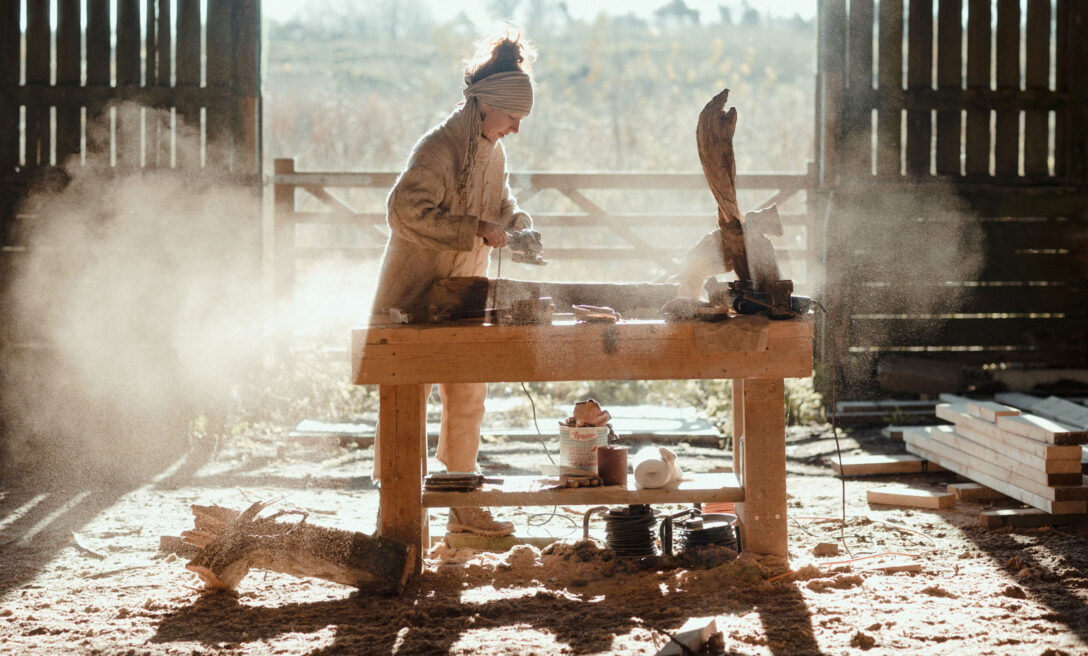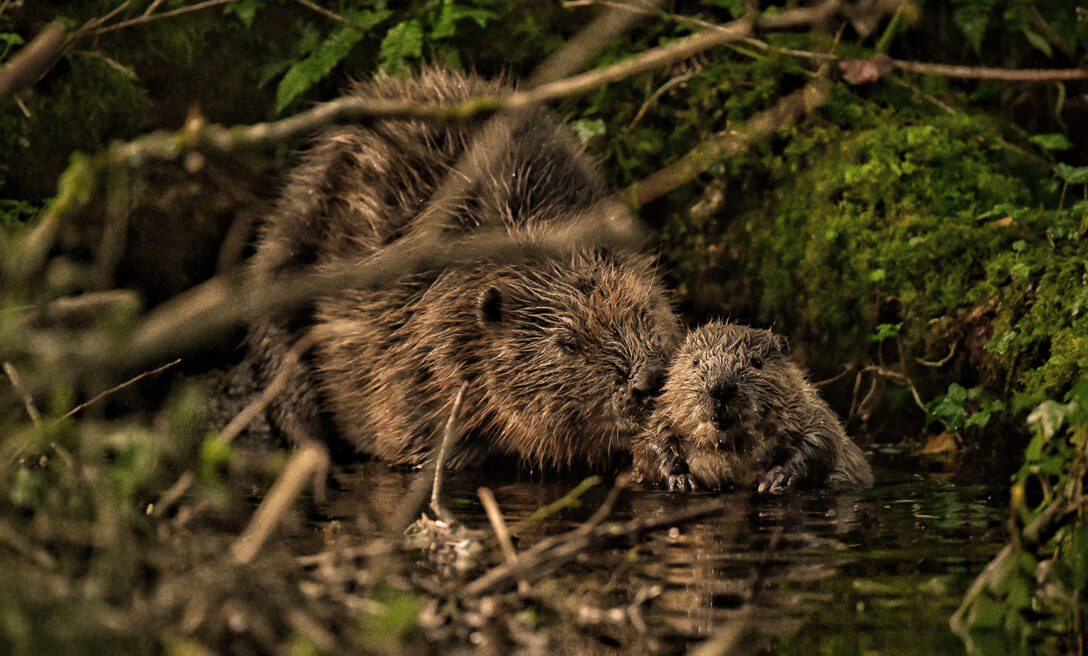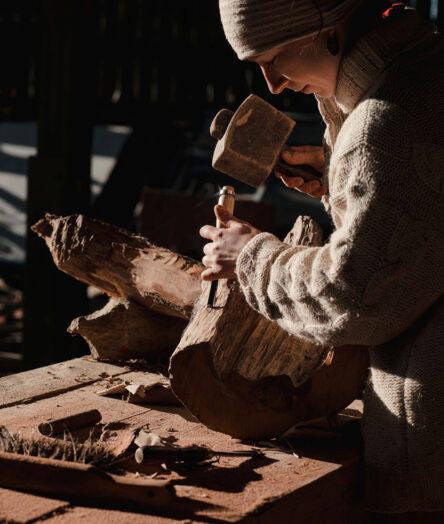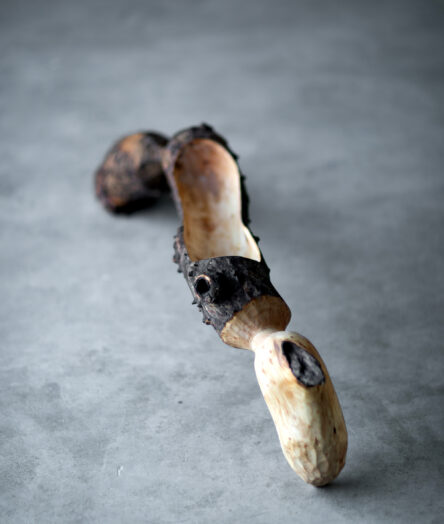
Our second Artist in Residence blog instalment delves a little deeper into the mechanics of Maya’s artistic process, and how a spark of creativity can immerge, develop and flow. We also explore the connection between the work of the beavers and Maya’s process, and how the two work in harmony to form a beautiful collaboration which Maya has titled ‘Origin of Chisels’.
Challenge and approach
Maya finds she is often attracted to projects where there is potential to challenge how we might think things should be or what we think we know, in particular the ‘we’ being Western culture. This links back to her experience while studying in Canada, prioritising projects that promote new pathways in the way we think about society, nature and relate to ourselves.
As an example Maya says: “In the summer, I did a collaborative residency with artist Ruby Ingleheart in Newlyn, Cornwall. We gathered stories from people off the street and fishermen fresh off the sea at Newlyn fish market about their relationship to food; memories from childhood, cultural traditions, or alternative objects and environments they’ve eaten in. We then wove parts of people’s stories into an interactive feast for 40 people. I carved two metre long wooden spoons, we performed collective gestures and various foods were served. So, we learnt from the curious then created a collective art performance that challenged the way people relate and experience eating.”
In terms of wood carving Maya’s process is similar and more refined: “I am initially attracted to a piece of wood if it is an interesting shape or found in a curious place, and then I begin the very physical and intuitive process of carving it. I sort of ask the wood what it wants to become by following what shapes are already there. Tracing the surface with my hand over and over again and going with my gut about what to do next.” Occasionally Maya works with wood that has been alive for hundreds of years, so she feels that honoring its natural, slowly evolved form is a sacred starting point.
As an artist Maya is drawn to making fluid and flowing shapes because it involves a much more dynamic making process: “I want the wood to make me dance around it to create the shape it so desires to be. I like to lean, stretch, circle, crouch, step back, lift, twist, stroke and need tea breaks around the wood. Plus, wood is so much more than just ‘a piece of wood’. Wood is a physical manifestation of the energy in nature. Formed from transference of energy from the soil and sun. Trees form cellulose from carbon dioxide in the air and water absorbed through their roots to grow into the magnificent wooden creatures they are, and this takes time and a constant dialogue with the ecosystem around them. Such an incredible material to work with so I want to celebrate its shape rather than flatten it out and square it off.”

Beaver vs human
Incorporating the work the beavers have already created helps to guide how Maya’s individual pieces will evolve. There are so many layers to the project, particularly around how the finished pieces represent a shared intuition between creature and human: “I think the beavers truly represent what it is to listen to one’s instincts and how in everything they do there is purpose – something we can all learn from.” Maya goes on to say: “The work of the beaver is honest; they don’t hide their workings-out, they leave things raw so we connect straight to them as the maker. Inspired by their ways, I vary from smoothing out my marks over the wood as well as leaving them completely raw so the viewer connects straight to me in the same way.”
In some areas of the wood carvings it is hard to distinguish between sections which are beaver and sections which are human: “I hope the pieces raise questions about perfectionism, celebrate naturalism, and encourage the value of what I call medicinal aesthetics. Where ‘finished artwork’ made from a natural material carries a realism, a story and the presence of its history is dancing in front of your eyes.” For Maya it is a balance where she aims for an outcome which is intuitive and joyous, whilst also feeling considered and shaped with purpose.
Read all about the legacy of Maya’s work and how she would like her work to be perceived in our third and final instalment of our Artist in Residence blog series on Field Notes. For more information on Maya’s work go to her website here, or follow her work on instagram @first.temples.
“Beavers truly represent what it is to listen to one’s instincts and how in everything they do there is purpose”

